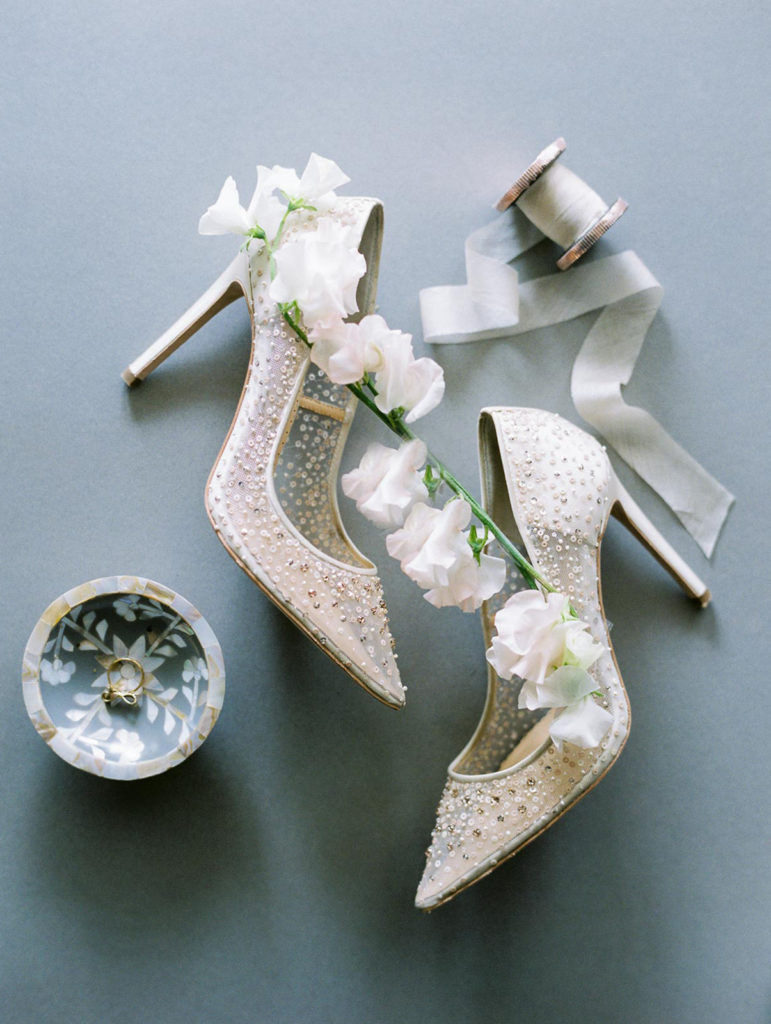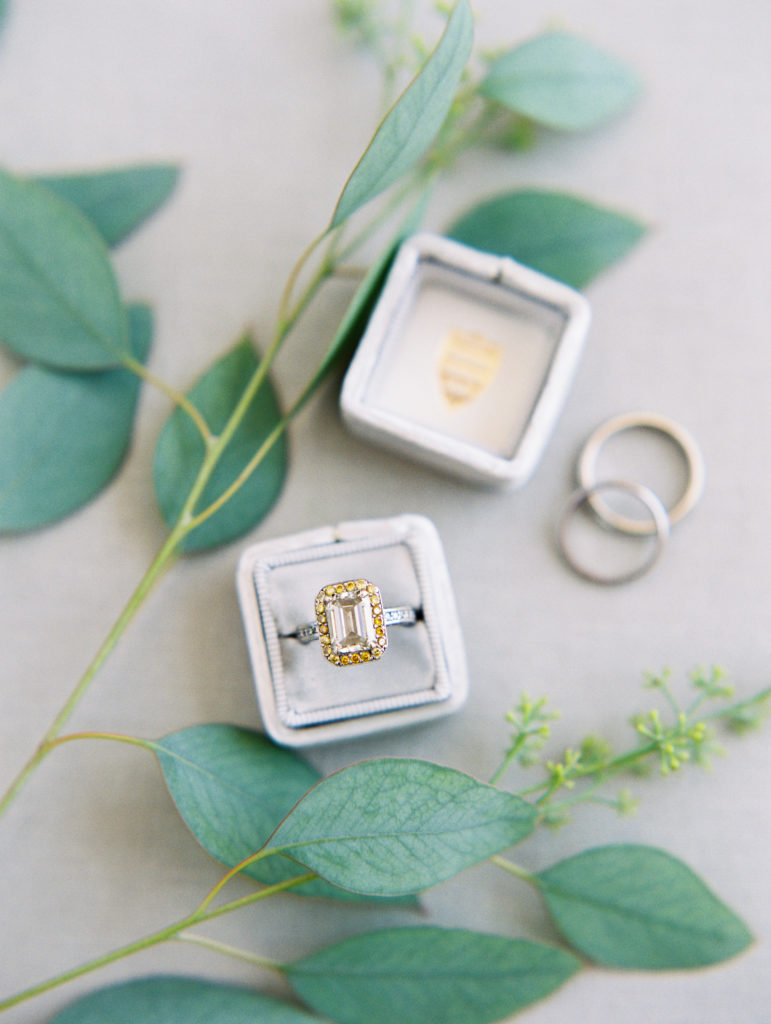Whether you’re shooting the bride’s shoes, the couples’ rings, or you’re an aspiring food photographer, chances are you’ll end up shooting a flat lay at some point in your career. Here are our top tips for shooting flat lays on film:
Avoid wearing bright colors
Film is much more prone to color reflections than digital is, so when wearing a bright color, it could reflect onto the scene. For example, if you wear a red shirt and you lean over a white place setting to take a photo, the place setting could look pink instead of white!
Overexpose to compensate for the light your body blocks
When leaning over to take an overhead shot, your body blocks some of the ambient light. To help compensate for this, overexpose by a half stop.
Pay attention to the shadows
Take note of where the shadows are falling and rotate your scene if you want them to fall in a different direction. You may also need to reposition yourself or rotate your setting so that your body doesn’t cast a shadow over your scene.
Choose a higher aperture setting
We love f2.8 bokeh, but when you need to get small diamond rings or the name of a designer shoe brand in focus, you need a longer depth of field. For still life shots, we recommend choosing at an aperture like f4 or f5.6.
Use a tripod
Using a tripod will help you to lock in your focus as well as enable you to shoot at slower shutter speeds!
Use a white v-flat or white reflector
Place the v-flat or reflector on the opposite side of your light source so that the light can bounce back into the scene and fill in your shadows.
Consider shooting outside instead of inside
If there’s not enough window light, consider bringing your scene outdoors. Place the flat lay right within the shadow of a building so that your light is even, but you’re still working with natural light.
Communicate the background colors of your scene with your lab
When the background of your flat lay is a bright color, the scanning machine can’t find a neutral point and may interpret the color incorrectly. To help your scanning technician color correct for the scene, you can send in a digital version of the photo or a smartphone shot.
Whether you incorporate one or more of these tips into your film photography workflow, we hope this post helps the next time you shoot flat lay imagery!


